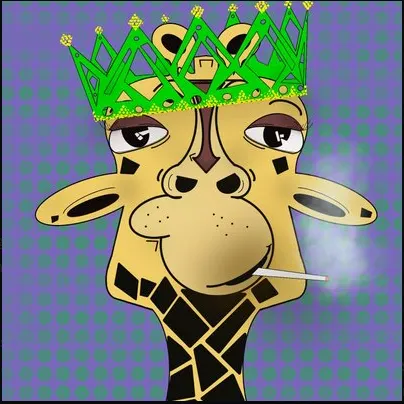Blockchain technology has opened up a world of new possibilities. From decentralized finance (DeFi) to digital scarcity and ownership through NFTs, there’s been an explosion of innovation around products, services, and platforms.
Cryptoeconomics and tokenization are unlocking new models for organization and ownership. The products, services, and platforms emerging from these new models are user-owned and operated, built for and by the communities they serve. These communities are composed of individuals from all parts of the globe, with diverse backgrounds and skillsets.
These global communities are exploring new and innovative ways to build products, foster community, and exchange value using blockchain technology, while confronting new challenges around coordination, governance, and decision making.
In order to address these new and novel coordination challenges in earnest, these communities are adopting new and novel tools with which to make meaningful decisions across time, space, and language.
Enter governance tokens.
What are governance tokens?
Governance tokens represent ownership in a decentralized protocol. They provide token holders with certain rights that influence a protocol’s direction. This could include which new products or features to develop, how to spend a budget, which integrations or partnerships should be pursued, and more.
Generally speaking, exercising this influence can take two forms. First, governance token holders can propose changes through a formal proposal submission process. If certain criteria are met and the proposal goes to a vote, governance token holders can use their tokens to vote on the proposed changes. The specific mechanisms and processes through which these rights are exercised differ across protocols.
In the presence of flat and distributed ownership, as well as the absence of defined leadership like that of traditional hierarchical organizations, governance tokens are an essential decision-making mechanism for decentralized autonomous organizations (DAOs).
How do governance tokens work?
In traditional corporations, a concentrated executive body—typically some combination of a C-Suite, board of directors, and shareholders—has sole discretion over decisions pertaining to the organization’s strategic direction.
DAOs differ from traditional corporations in that they don’t have a centralized group of decision-makers; but they still need to make decisions that influence the organization’s future.
DAOs make these decisions through a formally defined governance process involving proposals and community votes. While DAOs employ many flavors of governance, a common feature that they all share is the governance token. By virtue of living on the blockchain, governance tokens connote certain characteristics, such as immutable ownership and transparent distribution, that makes them ideally suited to distributed decision making.
When a DAO proposal goes to a vote, governance token holders have the opportunity to place their own vote on-chain. Typically, the weight carried by a token holder’s vote is proportionate to the number of tokens they hold. For example, if Alice holds 100 tokens and Bob holds 50 tokens, Alice carries twice as much voting power as Bob. Some DAOs employ different voting schemas such as quadratic voting, in order to make voting more equitable.
What's so special about governance tokens?
Governance tokens fall under the umbrella of utility tokens. In short, a utility token can be used to exercise certain rights or to access products/services offered by a protocol. The utility conferred by governance tokens is the right to influence a protocol’s direction. There are many examples of this in DeFi protocols, such as Uniswap (UNI) and Compound (COMP).
Governance tokens represent the main utility token of DeFi protocols and are the precursor to full decentralization. Governance tokens are the first cryptocurrencies to represent voting on a blockchain by distributing the power of making major platform decisions from a centralized structure to an entire community. This is because token holders are not only users, but also owners of the protocol.
Some protocols give their governance tokens special attributes that benefit the token holders. The following section lists some of the most popular governance tokens and the special attributes associated with them.
Who's using governance tokens?
It seems like every project launching nowadays has a governance token. While governance tokens don’t make sense for every protocol, they make a whole lot of sense for some. Below are examples of governance tokens with great use cases and interesting utility beyond simple voting rights:
- 🧱 Maker - MKR is widely considered one of the first governance tokens in DeFi. MKR token holders vote on-chain on topics ranging from DAO governance processes to ratifying new collateral types.
- 🦄 Uniswap - UNI has the largest market cap of any governance token ($3.8B at the time of writing). It is a pure governance token in the sense that UNI has little utility beyond giving token holders the ability to vote.
- 💸 veToken Finance - enables DeFi users to boost their yield and farming rewards without sacrificing liquidity, lock tokens in for long-term holding, and generate maximum rewards - all while participating in DAO governance with minimal effort.
- 💲 RAI Protocol - the decentralized, non-pegged stablecoin protocol’s governance token FLX is a backstop should the protocol go underwater, and gives holders the ability to govern more complex aspects of the protocol.
- 💱 Curve - the decentralized stablecoin exchange uses its governance token CRV as a reward to incentivize liquidity providers to add stablecoins to liquidity pools.
- 🌕 Terra (LUNA) - the algorithmic stablecoin protocol’s governance token, LUNA, plays a crucial role in the Terra ecosystem. It can be staked to help validate transactions on the network (and, in turn, earn more LUNA) and is also a mechanism for regulating Terra’s stablecoin prices.
- 💰 Compound - COMP token holders govern and upgrade the interest rates markets protocol by either directly participating in governance or delegating their voting rights to other addresses.
The challenges of governance tokens
There are plenty of reasons to be excited about governance tokens and what they offer for a decentralized future. That being said, there are some key challenges and risks to be aware of.
🎩 The plutocracy of token supply
In many cases, a large allocation of tokens is distributed to founders/team members and investors, which grants them majority control of decision-making. To avoid this, some projects have opted for a “fair launch” where governance tokens are wholly distributed to the users of the platform; unfortunately, this may still result in whales gaining an outsize influence over governance through their sizable positions.
⌚ Vesting periods
Most team and investor tokens are typically locked in a vesting schedule. This means that when a token first launches, the reduced float can inflate a project’s Fully Diluted Value. On top of this, when this vesting period has passed, there could be a shock to supply which impacts the influence over governance votes and overall market price.
⚖️ Regulatory uncertainty
More often than not, regulators are two steps behind innovation. This is especially true with crypto, which is notoriously challenging to regulate and, in some cases, a cause of contention amongst the regulators themselves.
For example, US-based regulatory bodies such as the Securities and Exchange Commission (SEC) and Commodity Futures Trading Commission (CFTC) have both suggested that crypto is under their regulatory purview. Although SEC Commissioner Hester Peirce has argued for a “safe harbor” to give crypto projects the opportunity to decentralize over time, the threat of being labeled a security still hangs over projects with governance tokens, as it remains unclear what approach the SEC will take to these projects in the future.
The future of governance tokens
The future of governance tokens, like just about everything else in crypto today, is filled with possibility and uncertainty. What the future holds will depend upon crucial factors such as regulations (e.g., which types of tokens are considered securities), the adoption of DAO operating models (e.g., the extent to which crucial activities happen on-chain), and technology innovations (e.g., new token standards).
Nevertheless, governance tokens will undoubtedly be a mainstay and essential component in the proliferation and adoption of decentralized, user-owned networks.
Governance tokens are helping DeFi projects reach their full potential by becoming truly decentralized. They will likely continue to be a key ingredient in protecting the community and investor interest in the system, through decentralizing and democratizing Web3 protocols, platforms, dapps, and games for the foreseeable future. Protocols such as Aave (AAVE), Uniswap (UNI), Terra (LUNA), and Curve (CRV) are paving the way for this in the DeFi space.
As time goes on, governance systems will likely become more complex. Owners will become more active and participative in their communities. Governance protocols will make it possible for a group to collectively decide how to manage the new crypto networks that will be at the core of the decentralized finance and production structures of the future.








